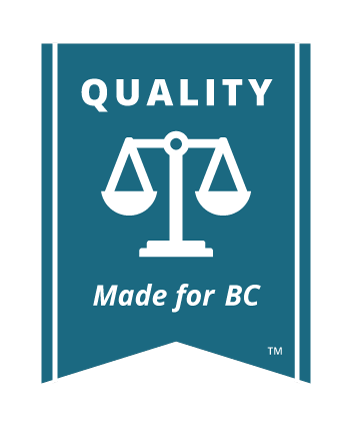Writing Orders
An order needs to be prepared when the court hearing is complete (in chambers or trial) and the court has made an order. The order is the document, filed in the court registry, which sets out the decision of the judge or associate judge. Rule 13-1 details how orders should be prepared.
It is very important to prepare the order with the exact terms that the judge stated or the court registry will not accept the order.

Learn More
The book, Supreme Court Chambers Orders (published by the Continuing Legal Education Society of BC), is available in the courthouse library. It is a useful resource to help you draft your court order.
The parties, not the court, are usually responsible for preparing the order. Any party can prepare the order, but usually it is the successful party. This means that if you prepared the application and the court granted you the order, you will prepare the order and send it to the other parties to have it signed. On the other hand, if you prepared the application but the court did not grant your order, the other party should prepare the order and send it to you to be signed.
Listen carefully to the judge or associate judge when they make the order, and take notes of the terms as accurately as possible. If the judge or associate judge says something you do not understand, ask them to clarify it right away. If there is something in your application that hasn’t been covered, bring it to the attention of the judge or associate judge. The court clerk also takes notes of the order made and you can request a copy of these notes from the registry if you are not certain about what was ordered.
When drafting your order, keep in mind two basic principles: the order should accurately reflect the court’s decision and it should speak for itself. In other words, the order should be understood without having to refer to any other documents.
Using the correct form for the order you are drafting, start with the style of proceeding at the top. The style of proceeding is the information that identifies your case within the court system with the court file number and names of the parties. It is the same on all your court documents.
The order also sets out:
- The name of the associate judge or judge who heard the application or trial
- The date of the hearing
- The place of the hearing
- The names of the lawyers or other representatives who appeared at the hearing
- The names of other parties, such as those acting on their own behalf (e.g., the defendant in person)
- Who was served with the application, or if the matter proceeded without notice or by consent
- If the judgment was reserved for a later date
In a written order, the judge is named: “The Honourable Justice (last name)”. If you are not sure how to spell the judge or associate judge's name, you can find a list of the names of the judges here.
You must set out, in numbered paragraphs, exactly what the judge, associate judge, or registrar ordered after the hearing of the application or at the end of the trial. Deal with only one matter in each paragraph. Those matters might be the decision about the relief granted, any directions (such as deadlines or specific items) for carrying out the decision, and the disposition (who gets what) of costs.
For example, the judge may have ordered that the defendant must pay you the sum of $32,000 as the balance owing under a contract for the sale of a piece of machinery, with interest from the date of default on 21 March 2005, payable within 4 weeks. You may also have been awarded full costs of the trial. In that case, your order would say something like the following:
- The defendant will pay the sum of $32,000 to the plaintiff as the balance owing under a contract for purchase and sale, dated February 3, 2004, for a bulldozer with serial number 123456
- The defendant will pay interest on the amount of $32,000 to the plaintiff at the rate set under the Court Order Interest Act from the date of default under the contract, March 21, 2005, to the date of payment
- The amount of $32,000, plus interest, is payable to the plaintiff within 4 weeks of the date of this court order
- The plaintiff is entitled to the costs of the trial
When you have prepared your draft order, take it to the court registry where a registry clerk will review the order to approve the format. Then the other parties who appeared at the hearing or trial must sign the order.
Settling the Terms of Your Order
After a hearing or trial, send your draft order to the other parties for their signatures. All parties who appeared at the hearing need to sign the order. You do not need signatures if the judge or associate judge signed the draft order at the end of the hearing. Nor do you need the signature of any party who does not consent but did not appear at the hearing (see Rule 13-1(1)(c)).
The parties’ signatures confirm that they agree that how you have drafted the order accurately expresses what the court said. If you are the unsuccessful party, signing the order does not mean that you agree with what the court has ordered. If you suspect that the other party may refuse or delay signing the order (thus delaying the filing of the order), you may ask at the hearing to waive the requirement that the other party must approve the form of the order.
If You Can’t Agree
If the parties cannot agree on the terms of the order, the order can be settled by a registrar (Rule 13- 1(11)). Transcripts of the original court hearing are not required, but the registrar will need a copy of the court clerk’s notes. In some cases, the judge may direct the order to be provided to them for approval. In other cases, the judge may direct the registrar to draw up and enter the order (Rule 13- 1(15)).
Registry Approval
When you have the signatures you need, or if the judge or associate judge signed your draft order, take it to the court registry. The registry staff will then compare the order with the notes taken by the court clerk to make sure that the order accurately states what was ordered. This process is called entering an order. The registry stamps the order and sends you a copy of the entered order. This is the document you will use to enforce your judgment.
If you and the other party cannot agree on what was said in court, you may need to book a hearing before the registrar to clarify the terms of the order, using Form 49 (see Rule 13-1(12)). The registrar may decide that the matter must go back to the judge or associate judge who heard it initially.

Find The Form
Form 49 Appointment
Amending an Order
Mistakes happen. You may have made a mistake in drafting the order. For example, the order may contain an incorrect address or an error in calculation. You may need to redraft the order to correct the error. Rule 13-1(17) allows the court, at any time, to correct a clerical error.







 JusticeEducation.ca
JusticeEducation.ca JusticeEd
JusticeEd /JusticeEducation
/JusticeEducation